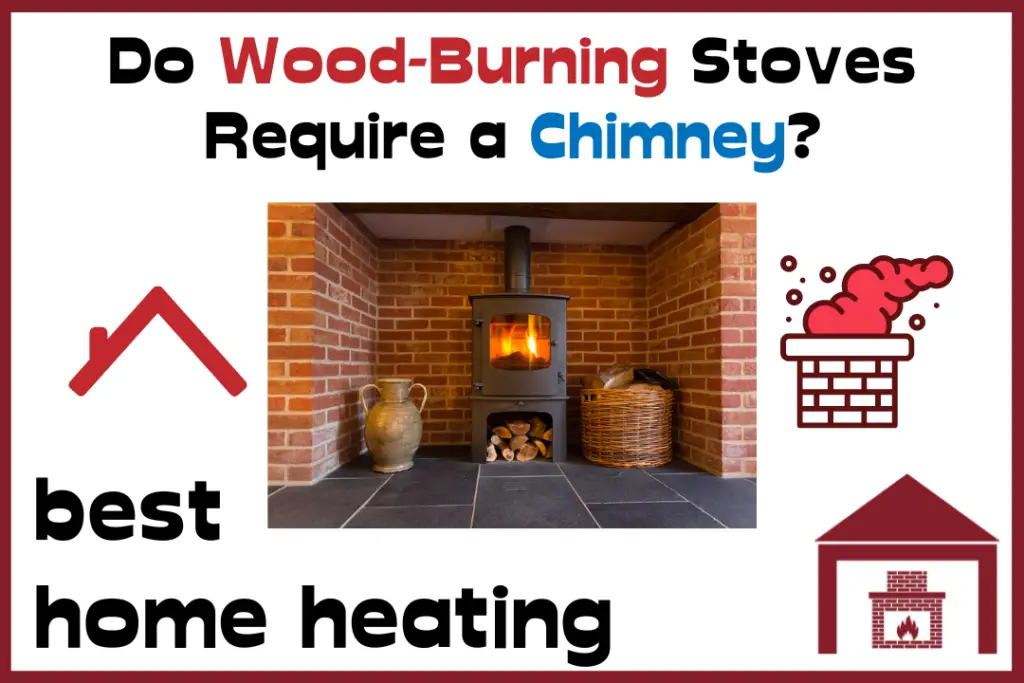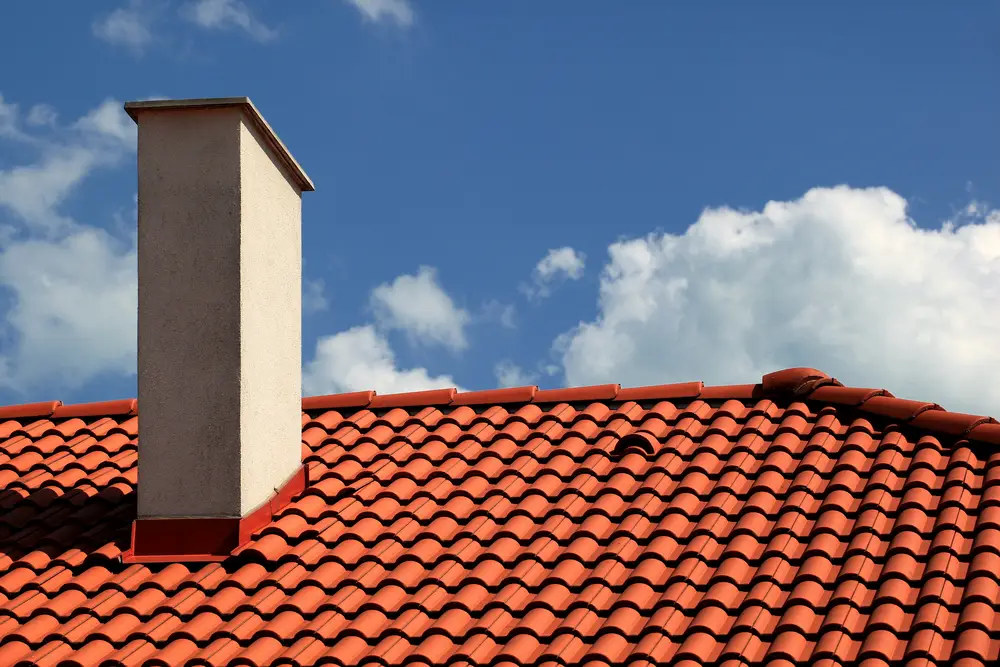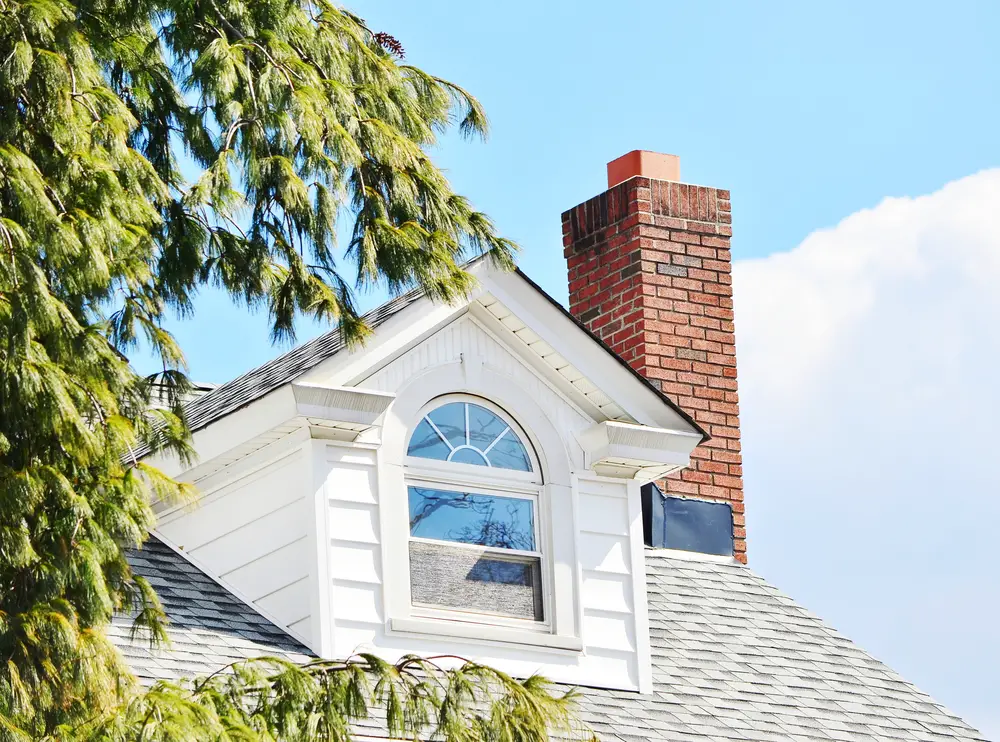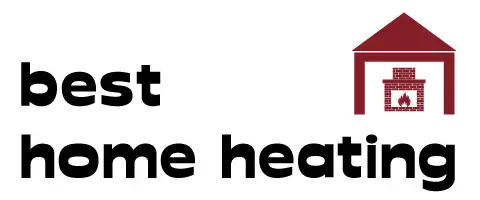Understanding the essential requirements of wood-burning stoves, one common question arises: do these stoves necessitate a chimney?
Wood-burning stoves need chimneys, either it is a masonry chimney or a prefabricated flue system. If you are living in a house without a chimney, you can get a twin wall flue system installed. The installation process is pretty easy. The flue pipe can go through the wall or roof of your building.
Read on to learn why a wood stove requires a chimney and what you can do if your building does not have one.

What kind of chimney do I need for a wood stove?
In order to function, a wood-burning stove needs either a masonry chimney or a prefabricated metal chimney. It serves two purposes: drawing oxygen—which is needed for combustion, and discharging smoke produced by the combustion. The safety of a wood-burning stove largely depends on the chimney the stove is connected to.
Inside a masonry chimney there is a metal or brick pipe—known as a flue, through which smoke passes. The diameter of the flue should be 25% larger than that of the stove pipe.
To some extent, the efficiency of the stove depends on the distance between the stove and the chimney. As a rule of thumb, this distance should not be more than 10 feet.
Most masonry chimneys are made of materials such as brick, stone or concrete block. The flue is lined with a 5-8-inch thick clay tile. Between the outer surface of the flue tile and the chimney masonry, there is a 1-inch space, which improves draught by reducing heat loss.
There may be multiple flues inside a chimney, in part because each solid fuel-burning appliance requires a separate flue.
Most new homes these days do not have chimneys, and given the size and layout of a masonry chimney, installing one in an existing house is impractical. If you are living in such a home with no chimney, you can still use a wood-burning stove, as we have stated.
For this, you need a prefabricated metal chimney unit. Prefabricated chimneys are lightweight and very easy to install. The performance of a prefabricated chimney is similar to that of a masonry chimney under similar circumstances.
Prefabricated chimneys come in two different types: single-wall flue pipes with no insulation, and twin wall flue pipes. You can choose either of them for your wood-burning stove, just make sure the chimney is Underwriters Laboratory (UL)-listed, and categorised as “all fuel” type rather than “vent” type.
Things to remember when installing a chimney flue for a wood-burning stove
Using combustion-based appliances, including wood-burning stoves, is associated with fire hazards and air pollution. To reduce these risks, most countries have made regulations for chimney flues.
If you want to bring an unused chimney back into use, the flue must be inspected to make sure it is free of dislodged birds nests and other such obstructions.
When installing a new chimney, the flue termination should be correctly positioned. To prevent downdraughts, you must position the flue outlet high enough. The flue must be larger than the stove outlet.
For a stove with a thermal output of 20kW or less, the flue diameter must be at least 125 mm. And for a 20kW-30kW stove, the diameter of the flue should be at least 150 mm.
There are also guidelines for the proximity of combustible materials to the flue pipe. If it is a single-skin flue pipe, its distance from combustible materials should be three times its diameter. For example, if the diameter of the flue pipe is 130 mm, it must be at least 130 x 3 = 390 mm away from combustible materials.
And if you are using a twin wall flue system due to an absence of a masonry chimney in the building, make sure there is a guard where the pipe passes through a storage space, cupboard or roof space.
You will need a liner that connects your stove to the flue. If it is a stainless steel liner, you can bend it inside the chimney, but make sure the liner is one single piece; do not join multiple pieces together.

Does chimney height matter?
The construction of a chimney must be according to the local building codes, which stipulate the height of the chimney. In general, a chimney must be at least 3 feet above the shortest side of the roof, and 2 feet taller than any roofs, trees, and dormers within 10 feet. This is known as the 3-2-10 Rule.
With too short a chimney your stove will not function properly due to inadequate draught. It can become a fire hazard.
If you notice smoke in your house when your wood-burning stove is running, most probably the chimney is not shorter than your house in height, and therefore your house is pulling air upwards.
Inadequate draught causes another serious issue: soot buildup inside the chimney flue. If left unattended, it can start a chimney fire. Inadequate draught also causes incomplete combustion, which can cause condensation (Link to why is there condensation in my wood-burning stove) and produce carbon monoxide—a tasteless and odorless but deadly gas.
The only way to detect carbon monoxide in the air is to use a carbon monoxide detector. Installing these devices is a legal requirement for homes with wood-burning stoves, both in the UK and the USA.

How much does it cost to install a twin wall flue?
Installing a prefabricated twin wall flue pipe system, which involves cutting a hole in the roof, costs $1800 on average—including the price of the flue pipe. The flue itself costs $500-$700. In the UK or the USA, the installer may charge anywhere between $200 and $300 per day, depending on your geographical location.
If you have the time, you can even install the flue system yourself. Connecting a wood-burning stove to an existing chimney is a simple and straightforward process. However, installing a prefabricated chimney system is a bit more complicated, and you have to notify your local council.
What stoves don’t need a flue?
In most cases, installing a twin wall flue system is a viable option, so you can enjoy the benefits of a wood-burning stove. However, under certain circumstances, authorities may not allow you to use a solid fuel-burning heating appliance in your home. If that is the case, you have to look for an alternative to your wood-burning stove.
The most convenient alternative is an electric stove, which is cleaner and more user-friendly than a wood stove. Some models of electric stoves are very aesthetically pleasant, with visual effects that imitate real wood fires.
A gas stove or a bioethanol fireplace, both of which do require flue systems, can be a cleaner alternative to your wood stove. The emissions are remarkably lower than that of a wood stove—no visible smoke comes out of the flue pipe.
And there is underfloor heating, which many homeowners find very convenient. It works very well with an air source or ground source heat pump. Depending on the design, layout and location of your home, underfloor heating can be a best way to heat the home.
Conclusion
All solid fuel heating appliances, including wood-burning stoves, require chimneys. If you are living in a building with no pre-existing chimney, constructing a masonry chimney may not be practical due to the distinct layout of the building. Therefore, you have to get a twin wall flue system installed before you can use a wood-burning stove.
And if installing a twin wall flue system is not a viable option in your case, you can opt for a heating appliance that does not require one. Take all relevant factors into consideration when choosing a heating appliance.


